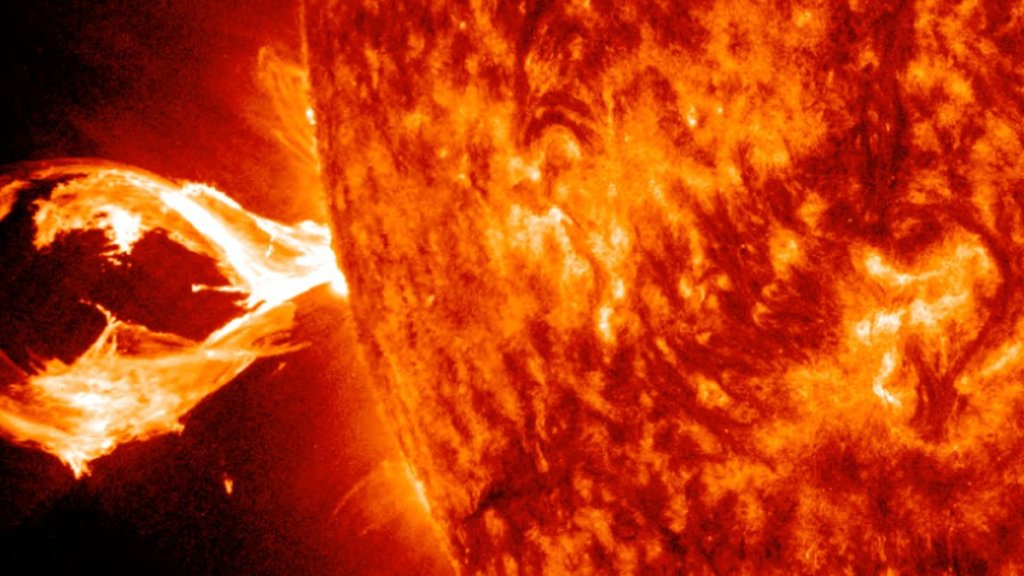A big solar outburst over the weekend might produce bright auroras here on Earth tonight (Feb. 14).
The sun blasted a powerful X-class flare into space on Saturday (Feb. 11), an outburst accompanied by an eruption of solar plasma known as a coronal mass ejection (CME). Some of the CME particles could hit Earth’s upper atmosphere late on Valentine’s Day (Tuesday, Feb. 14) and create shining auroras, experts said.
“Minor G1-class geomagnetic storms are possible on Feb. 14 and 15 when one or more CMEs could deliver glancing blows to Earth’s magnetic field,” SpaceWeather.com wrote (opens in new tab) of the event.
More activity might be coming from “a number of sunspot groups [that] are present on the visible solar disk,” added the U.S. National Oceanic and Atmospheric Administration (NOAA) in a Monday (Feb. 13) update (opens in new tab). These sunspots may generate medium-sized or M-class flares in the coming days, NOAA added.
Related: The sun just erupted with a major X-class solar flare. Here’s what it looked like on video
The sun will reach the peak of its current 11-year activity cycle around 2025, but most of the sun storms don’t affect us much. Brief interruptions can happen in shortwave, and particles associated with CMEs may supercharge auroras, which are shining lights high in our atmosphere caused by solar particles interacting with molecules in Earth’s atmosphere.
NASA and the European Space Agency (ESA) partner with telescopes around the world to keep an eye on the sun, just in case it happens to blast out something a bit stronger that would affect power lines or satellite communications.
The agencies also run a number of sun-gazing spacecraft, as well as missions that swoop close to the sun to learn more about its activity. NASA’s Parker Solar Probe and ESA’s Solar Orbiter sample the solar wind — particles streaming from the sun — and take a look at solar structures and the sun’s atmosphere from a relatively close-up view.
Elizabeth Howell is the co-author of “Why Am I Taller (opens in new tab)?” (ECW Press, 2022; with Canadian astronaut Dave Williams), a book about space medicine. Follow her on Twitter @howellspace (opens in new tab). Follow us on Twitter @Spacedotcom (opens in new tab) or Facebook (opens in new tab).

